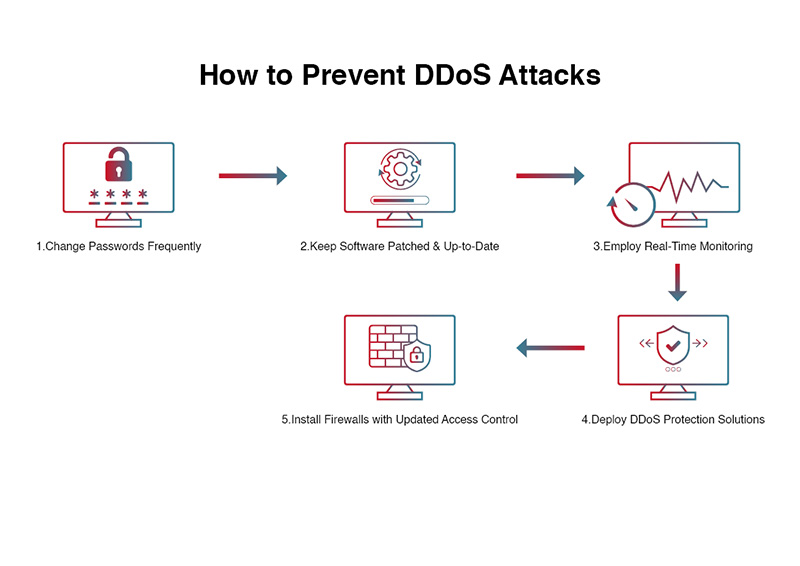How to Prevent DDoS Attacks
DDoS (Distributed Denial of Service) attacks can wreak havoc on websites, causing downtime, slow loading times, and potential data breaches. These attacks occur when multiple compromised systems flood the targeted website with an overwhelming amount of traffic, rendering it inaccessible to legitimate users.
Fortunately, there are several steps you can take to prevent DDoS attacks and protect your website from falling victim to them.
1. Use DDoS Protection Services
One of the most effective ways to prevent DDoS attacks is to invest in DDoS protection services. These services can detect and mitigate attacks in real-time, ensuring that your website remains online and accessible to legitimate users. Look for a provider that offers a combination of network monitoring, traffic analysis, and mitigation techniques to effectively defend against DDoS attacks.
2. Configure Firewalls
Firewalls act as a barrier between your website and malicious traffic, filtering out potentially harmful requests before they can reach your server. Configure your firewall settings to block suspicious IP addresses, limit the number of requests from a single user, and monitor traffic patterns for any anomalies that may indicate a DDoS attack.
3. Implement Rate Limiting
Implementing rate limiting measures can help prevent DDoS attacks by restricting the number of requests that can be made to your website within a certain time frame. By setting limits on the number of requests per IP address, you can reduce the impact of potential DDoS attacks and ensure that your server can handle legitimate traffic effectively.
4. Monitor Network Traffic
Regularly monitoring network traffic can help you detect and respond to DDoS attacks early on. Use network monitoring tools to track the volume and patterns of incoming traffic, and set up alerts for any sudden spikes or unusual activity that may indicate an ongoing attack. By staying vigilant and proactive, you can minimize the impact of DDoS attacks on your website.
5. Keep Software Up to Date
Outdated software can leave your website vulnerable to DDoS attacks and other security threats. Ensure that your operating system, web server, and other software are regularly updated with the latest security patches and fixes. By staying current with software updates, you can prevent known vulnerabilities from being exploited by attackers.
6. Educate Your Team
Educating your team members about the risks of DDoS attacks and best practices for preventing them is crucial for maintaining the security of your website. Train your staff on how to recognize and respond to potential DDoS attacks, and establish clear protocols for reporting suspicious activity. By fostering a culture of security awareness, you can strengthen your defenses against DDoS attacks.
By taking proactive measures to prevent DDoS attacks, you can safeguard your website from costly downtime and ensure a reliable online experience for your users. Stay informed about the latest threats and security trends, and be prepared to act swiftly in the event of an attack to minimize its impact on your website.
